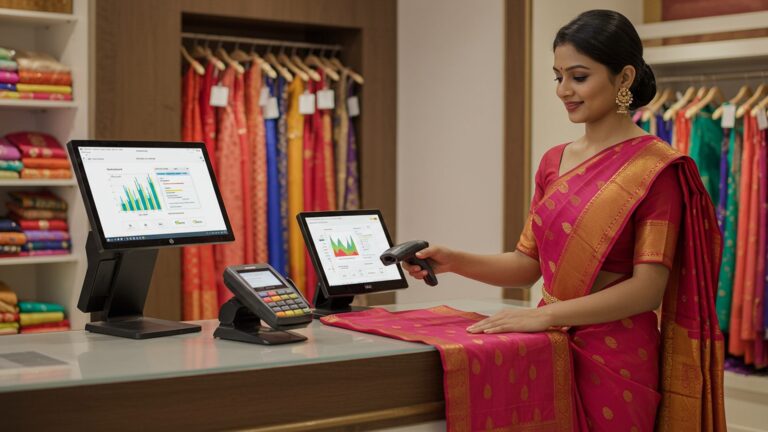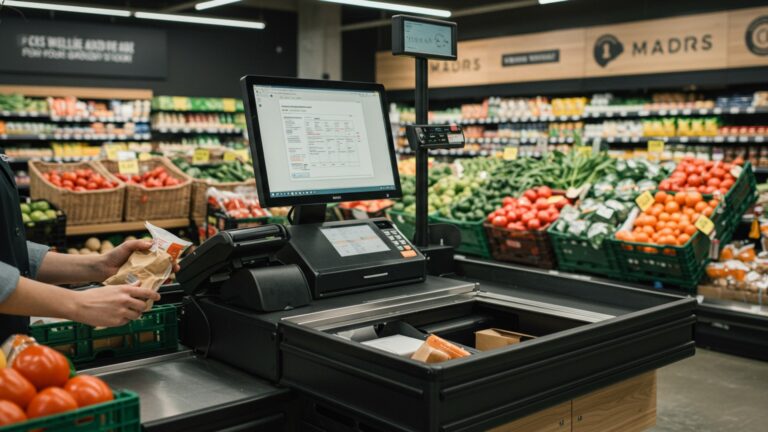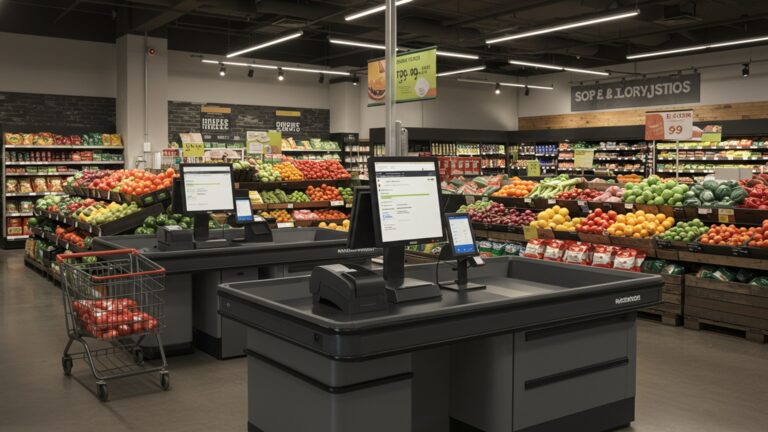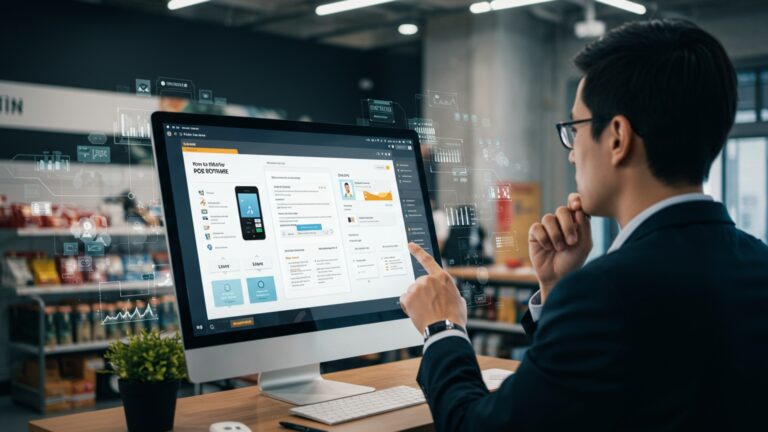Your Complete Guide to Integrated Billing and POS Software
Businesses today navigate a complex landscape where disparate billing and point-of-sale systems often create operational bottlenecks, hindering growth and customer satisfaction. Manually reconciling inventory with sales data or managing separate payment gateways for online and in-store transactions, for instance, drains resources and introduces costly errors. The modern retail and service sectors demand seamless, real-time data flow to support everything from dynamic pricing strategies to personalized loyalty programs. Recent advancements in cloud-based platforms and API integrations now consolidate these critical functions, offering a unified commerce experience that enhances efficiency, improves financial accuracy. provides actionable insights. Embracing integrated billing and POS software is no longer a luxury but a strategic imperative for organizations aiming to thrive in an increasingly competitive, data-driven market.

Understanding the Core: What is Integrated Billing and POS Software?
In today’s fast-paced business environment, efficiency and accuracy are paramount. For many businesses, managing sales, inventory. customer interactions can be a complex juggling act. This is where integrated billing and POS software steps in as a game-changer. At its heart, an integrated system combines the functionalities of a Point of Sale (POS) system with comprehensive billing and invoicing capabilities into a single, unified platform.
- Point of Sale (POS) Software
- Billing Software
Think of the POS as the central hub for all your sales transactions. When a customer makes a purchase, the POS system records the sale, processes payments. often interacts with inventory to update stock levels. Modern POS systems go far beyond simple cash registers, offering features like barcode scanning, receipt printing. customer management at the point of interaction.
This component is responsible for generating invoices, tracking payments, managing accounts receivable. sometimes even handling subscription billing or recurring charges. It ensures that services rendered or products sold are accurately charged for. that financial records are meticulously maintained.
The “integration” aspect is crucial. Historically, businesses often used separate systems for these functions – a standalone POS for sales and a different accounting package for billing. This disjointed approach led to manual data entry, reconciliation nightmares. a higher risk of errors. An integrated solution eliminates these silos, allowing data to flow seamlessly between sales, inventory. financial records. For instance, when a sale is processed through the POS, the billing module automatically generates the necessary financial entries. inventory is updated in real-time. This holistic approach provides a complete, accurate. up-to-the-minute view of your business operations.
The Anatomy of Integrated Billing and POS Software: Key Features
A robust integrated billing and POS software solution is packed with features designed to streamline every aspect of your business operations. Understanding these core functionalities is key to appreciating the power of such a system.
- Sales and Transaction Management
- Efficient Checkout
- Payment Processing
- Returns and Exchanges
- Inventory Management
- Real-time Tracking
- Stock Alerts
- Multi-location Inventory
- Supplier Management
- Customer Relationship Management (CRM)
- Customer Profiles
- Loyalty Programs
- Targeted Marketing
- Employee Management
- User Permissions
- Time Tracking
- Commission Tracking
- Reporting and Analytics
- Sales Reports
- Inventory Reports
- Financial Reports
- Customer Analytics
- Multi-channel and E-commerce Integration
- Seamlessly connecting physical store sales with online sales platforms (e. g. , Shopify, WooCommerce) to ensure consistent inventory and customer data across all channels.
Fast processing of sales, including barcode scanning, item lookups. customizable pricing.
Support for various payment methods like credit/debit cards, mobile payments, gift cards. cash, often with integrated payment gateways.
Simplified procedures for handling product returns, refunds. exchanges, ensuring accurate inventory adjustments.
Automatic updates of stock levels as sales occur or new inventory arrives.
Notifications for low stock levels to prevent sell-outs and facilitate timely reordering.
Centralized management of inventory across multiple store locations or warehouses.
Tracking supplier insights, purchase orders. receiving goods.
Storing customer contact insights, purchase history. preferences.
Managing reward points, discounts. special offers to encourage repeat business.
Utilizing purchase data to segment customers and send personalized promotions.
Assigning different access levels to staff based on their roles.
Monitoring employee work hours and performance.
Calculating sales commissions for individual employees.
Detailed insights into sales trends, popular products. peak hours.
Analysis of stock movement, dead stock. inventory valuation.
Summaries of revenue, expenses. profitability, often integrating directly with accounting software.
Understanding customer behavior and buying patterns.
Why Integration Matters: The Unbeatable Advantages for Your Business
The decision to adopt an integrated billing and POS software system is not just about technology; it’s about strategic business improvement. The advantages extend far beyond mere convenience, impacting your bottom line, operational efficiency. customer satisfaction.
- Efficiency and Automation
- Accuracy and Reduced Errors
- Enhanced Customer Experience
- Improved Inventory Control
- Better Financial Visibility and Reporting
- Streamlined Operations
- Cost Savings (Long-term)
One of the most significant benefits is the drastic reduction in manual tasks. Instead of entering sales data into one system and then re-entering it into another for billing or inventory updates, the integrated system automates this flow. This frees up staff time, allowing them to focus on more value-added activities like customer service or strategic planning. Imagine a busy retail store during a holiday rush; without integration, every sale would mean multiple manual steps. With it, the process is instantaneous and seamless.
Manual data entry is a common source of human error. Typos in prices, incorrect inventory counts, or misfiled invoices can lead to financial discrepancies, customer dissatisfaction. wasted time in corrections. An integrated system minimizes these risks by ensuring that data, once entered, is consistent across all modules. This leads to more reliable financial reporting and inventory counts.
With a unified view of customer data, including purchase history and preferences, your staff can provide personalized service. For example, if a customer previously bought a specific item, the POS can suggest complementary products or recall their loyalty points instantly. This seamless experience builds trust and fosters loyalty. A personal anecdote from a local bakery owner, “Before our integrated system, finding a customer’s past order meant digging through stacks of paper. Now, it’s a click away, making our customers feel truly valued.”
Real-time inventory updates are invaluable. Businesses can prevent overselling, avoid stockouts. make informed purchasing decisions based on actual sales data. This reduces carrying costs associated with excess inventory and minimizes losses from expired or obsolete stock. For instance, a small boutique can use the insights from their integrated system to identify slow-moving items and implement targeted promotions to clear them out, optimizing their shelf space.
Integrated systems provide a holistic view of your business’s financial health. With sales, billing. inventory data all connected, generating comprehensive reports becomes effortless. You can quickly see which products are most profitable, comprehend sales trends, track expenses. forecast revenue more accurately. This robust reporting empowers business owners to make data-driven decisions, identifying opportunities for growth or areas needing improvement.
From managing employee schedules to processing returns, every operational facet becomes more organized and efficient. The single source of truth eliminates confusion and ensures everyone is working with the most current data. This operational synergy leads to a smoother workflow and a more productive team.
While there’s an initial investment, the long-term cost savings are substantial. Reduced labor costs from automation, minimized losses due to errors or poor inventory management. improved customer retention all contribute to a healthier bottom line. Moreover, avoiding penalties from inaccurate financial reporting is another hidden saving.
Decoding the Technology: How Integrated Systems Work
Understanding the underlying technology of integrated billing and POS software can demystify its power. While the user interface is designed for simplicity, a sophisticated architecture works behind the scenes to ensure seamless data flow and functionality.
- Database Interaction
- APIs (Application Programming Interfaces)
At the core of any integrated system is a centralized database. Instead of having separate databases for sales, inventory. customer details, an integrated system stores all this data in one place or in highly interconnected databases. This single source of truth ensures consistency and prevents data duplication. When a sale occurs, the POS module interacts with this database to record the transaction, update inventory levels. log customer activity.
APIs act as the digital “bridges” that allow different software components or even entirely separate applications to communicate with each other. In an integrated system, APIs facilitate the exchange of data between the POS module, the billing module, the inventory module. potentially third-party applications like accounting software (e. g. , QuickBooks, Xero) or e-commerce platforms (e. g. , Shopify).
A simplified example of an API call for updating inventory might look like this:
POST /api/v1/inventory/update Host: yourpossoftware. com Content-Type: application/json Authorization: Bearer [YOUR_API_KEY] { "product_id": "SKU12345", "quantity_change": -1, "location_id": "STORE001" }
This
POST
request tells the inventory system to decrement the quantity of
SKU12345
by one unit at
STORE001
after a sale.
| Feature | Cloud-based (SaaS) | On-premise |
|---|---|---|
| Hosting | Hosted by the vendor on their servers (e. g. , AWS, Azure) | Hosted on your own servers within your business premises |
| Accessibility | Accessible from anywhere with an internet connection via web browser or app | Typically accessible only within your local network, or via VPN for remote access |
| Maintenance & Updates | Managed by the vendor; automatic updates and security patches | Managed by your IT team; manual updates and security patching |
| Cost Structure | Subscription-based (monthly/annually); lower upfront cost | Higher upfront cost for licenses, hardware. installation; ongoing maintenance costs |
| Scalability | Easily scalable up or down based on business needs | Scalability requires additional hardware and IT infrastructure investment |
| Security | Vendor responsible for security; robust data centers and protocols | Your IT team is responsible for security; depends on internal expertise and resources |
Most modern integrated billing and POS software solutions are cloud-based due to their flexibility, scalability. reduced IT burden for businesses.
In complex scenarios, especially with multi-location businesses or offline capabilities, data synchronization mechanisms are crucial. These ensure that even if a POS terminal goes offline temporarily, sales data is stored locally and then automatically synced with the central database once connectivity is restored. This guarantees that all data remains consistent and up-to-date across the entire system.
Real-World Impact: Case Studies and Use Cases
The practical application of integrated billing and POS software across various industries highlights its transformative potential. Let’s look at how different businesses leverage these systems to achieve operational excellence and enhanced customer satisfaction.
- The Thriving Retail Boutique: “Chic Threads”
Chic Threads, a fashion boutique with two locations, faced challenges managing inventory and customer loyalty across both stores. They implemented an integrated billing and POS software solution. Now, when a customer buys a dress at store A, the inventory is immediately updated across both locations and their e-commerce site. The system also tracks customer purchase history, allowing staff to offer personalized recommendations. For example, if a customer bought a specific designer’s top last season, the system prompts the sales associate to show them the new collection from that designer. The integrated loyalty program automatically awards points. customers can redeem them at either store or online, fostering a consistent brand experience. This integration eliminated manual stock counts between stores and significantly boosted customer retention.
- The Bustling Restaurant: “The Gastronome Grill”
The Gastronome Grill, a popular eatery, integrated its POS with kitchen display systems (KDS) and table management software. When an order is taken at the table via a handheld POS device, it’s instantly sent to the KDS in the kitchen, streamlining order fulfillment and reducing errors. The billing module automatically calculates split checks, applies discounts. processes payments efficiently. The system also tracks ingredient inventory, alerting the chef when supplies run low for popular dishes. This has drastically cut down on food waste and improved order accuracy, leading to faster table turnover and happier diners. According to the restaurant manager, “Our integrated system is like having an extra pair of hands, making sure every order is perfect and every customer feels valued.”
- The Dynamic Service Business: “Zenith Spa”
Zenith Spa, a wellness center offering massages, facials. hair services, relies heavily on appointment booking and client history. Their integrated billing and POS software manages everything from online appointment scheduling and staff calendars to service billing and product sales. When a client books a massage, the system automatically sends a confirmation, allocates the therapist. creates a billing record. After the service, the POS processes payment for the massage and any products purchased. The CRM feature keeps detailed notes on client preferences (e. g. , preferred massage oil, skin sensitivities), allowing therapists to provide highly personalized care. This has not only improved client satisfaction but also significantly reduced no-shows and simplified staff scheduling.
- Small Business Anecdote: “Crafty Creations”
Sarah, the owner of Crafty Creations, a small handmade jewelry business, started with a simple cash register and manual ledgers. As her business grew, managing sales, raw material inventory. custom orders became overwhelming. “I was spending hours every week just tallying sales and trying to figure out what I needed to reorder,” she recalls. Implementing a basic
integrated billing and POS software package transformed her operation. Now, every sale instantly updates her inventory of beads and metals. she can generate invoices for custom pieces with ease. “It gave me my evenings back,” Sarah says, “and I can see exactly which designs are selling best, helping me focus my creative energy where it matters most.”
These examples illustrate that regardless of industry or size, integrated solutions provide tangible benefits by centralizing data, automating processes. offering critical insights that drive business growth.
Choosing the Right Integrated Billing and POS Software for Your Business
Selecting the ideal integrated billing and POS software is a critical decision that can profoundly impact your business’s efficiency and growth. It’s not a one-size-fits-all scenario, so careful consideration of your specific needs is essential.
- Business Type and Size
- Retail
- Restaurant/Cafe
- Service-based
- Small vs. Enterprise
- Scalability
- Budget
- Ease of Use (UI/UX)
- Customer Support
- Security Features
- Customization Options
- Hardware Compatibility
- Integrations with Other Software
Do you need extensive inventory management, barcode scanning. multi-store support?
Look for features like table management, kitchen display system (KDS) integration, order modifiers. tip management.
Appointment scheduling, client management, recurring billing. staff management are key.
Smaller businesses might opt for simpler, more affordable solutions, while larger enterprises require robust, highly customizable. scalable systems.
Consider your future growth. Will the software be able to handle increased transaction volumes, additional locations, or new product lines without requiring a complete overhaul? A scalable solution grows with you.
Software solutions range widely in price, from free basic versions to expensive enterprise-level subscriptions. Factor in not just the monthly/annual fees but also potential costs for hardware, setup, training. ongoing support.
A system, no matter how powerful, is ineffective if your staff finds it difficult to use. Look for an intuitive, user-friendly interface that minimizes the learning curve and reduces training time. Request demos and involve your team in the evaluation process.
What kind of support does the vendor offer? 24/7 phone support, email, chat, online knowledge bases, or community forums? Reliable and responsive support is crucial, especially during initial setup and for troubleshooting.
Your system will handle sensitive customer data (e. g. , payment data) and critical business financials. Ensure the software offers robust security features, including data encryption, user access controls, regular backups. compliance with industry standards (e. g. , PCI DSS for payment processing).
Can the software be tailored to your unique business processes? Look for flexibility in creating custom reports, modifying receipt templates, or integrating with other specialized tools you use.
If you have existing POS hardware (printers, cash drawers, barcode scanners), ensure the new software is compatible. If not, factor in the cost of new hardware. Most modern cloud-based solutions are hardware-agnostic, often working with standard tablets and peripherals.
Beyond its core billing and POS functions, can it seamlessly integrate with other essential business tools like accounting software (e. g. , QuickBooks, Xero), e-commerce platforms (e. g. , Shopify, Magento), or email marketing services? This further enhances the “integrated” experience.
Actionable Takeaway: Create a Checklist
Before you even start looking, sit down with your team and create a detailed checklist of your absolute must-have features and nice-to-haves. Prioritize them. This will serve as your compass in navigating the myriad of options available and help you narrow down vendors that truly meet your operational needs.
Implementation and Beyond: Best Practices for Success
Once you’ve chosen your integrated billing and POS software, successful implementation is key to realizing its full benefits. It’s more than just installing software; it’s about integrating it into your daily operations and leveraging its capabilities effectively.
- Thorough Data Migration
- Comprehensive Staff Training
- Phased Rollout (If Applicable)
- Regular Updates and Maintenance
- Leveraging Analytics and Reporting
- Seek Feedback and Iterate
This is often the most critical and complex step. Carefully plan how you will transfer existing data – customer lists, product catalogs, inventory levels, pricing. historical sales data – from your old systems into the new one. Ensure data cleanliness before migration to avoid transferring errors. Many vendors offer migration tools or services, which can be invaluable. Double-check all migrated data for accuracy before going live.
Your team will be the primary users of the new system, so their proficiency is paramount. Conduct thorough training sessions for all staff members who will interact with the software. Tailor training to different roles (e. g. , sales associates, managers, inventory staff). Provide clear documentation, cheat sheets. opportunities for hands-on practice. Emphasize the “why” behind the change – how the new system will make their jobs easier and improve customer service – to foster adoption.
For larger businesses or those with multiple locations, a phased rollout can minimize disruption. Start with one department or one location, iron out any kinks. then expand. This allows you to learn and adapt without impacting your entire operation simultaneously.
Software is not a set-it-and-forget-it solution. Stay on top of software updates, especially for cloud-based systems which often roll out new features and security patches automatically. For on-premise solutions, schedule regular maintenance and backups. This ensures your system remains secure, performs optimally. you benefit from the latest enhancements.
One of the most powerful aspects of integrated billing and POS software is its ability to generate insightful reports. Don’t just use it for transactions; actively dive into the analytics. grasp your best-selling products, peak sales times, customer buying patterns. inventory turnover rates. Use these data-driven insights to make informed business decisions, optimize marketing strategies. improve operational efficiency. Schedule regular review meetings to discuss these reports and translate them into actionable strategies.
Encourage your staff to provide feedback on the new system. Are there pain points? Are there features they wish existed? Use this feedback to optimize workflows, provide additional training, or even communicate with your software vendor about potential improvements. Continuous improvement is key to maximizing your investment.
Conclusion
Embracing integrated billing and POS software is no longer a luxury. a strategic imperative for modern businesses. You’ve seen how unifying these critical functions streamlines operations, from processing a sale to updating inventory and generating financial reports instantaneously. My personal tip is to not just look at features. to envision the seamless data flow. Think of how a single transaction at the counter can automatically adjust stock levels and allocate revenue, eliminating manual reconciliation. This holistic approach is crucial in today’s fast-paced market, where real-time insights are paramount for agility. The current trend leans towards AI-powered analytics within these platforms, offering predictive insights for inventory management and personalized customer experiences, a recent development making advanced capabilities accessible to businesses of all sizes. Don’t let the initial setup deter you; consider it an investment in your operational backbone. Take the actionable step now to evaluate your current systems and identify where integration can unlock unparalleled efficiency. Your business deserves a future-proof foundation that empowers growth and gives you a significant competitive edge.
More Articles
Master Billing and POS Software Integration for Enhanced Business Efficiency
How to Streamline Your Billing with Effective POS Billing Software Solutions
Learn How POS Software Can Revolutionize Your Small Business Operations
How to Choose the Best POS Software for Your Retail Store Success
How to Leverage Cloud Based POS Software for Scalable Business Growth
FAQs
What exactly is integrated billing and POS software?
It’s a single software solution that combines your point-of-sale (POS) operations – like processing sales, managing returns. handling customer interactions at the checkout – with your billing and invoicing processes. Instead of using separate systems for sales and for generating invoices or managing accounts, everything is connected and works together seamlessly.
Why should my business consider using an integrated system?
You should consider it because it streamlines your entire operation. It reduces manual data entry errors, saves a ton of time, improves accuracy across sales and financial records. gives you a much clearer, real-time view of your business’s performance. It’s all about making things more efficient and less complicated.
What are the biggest benefits of integrating billing and POS?
The biggest benefits include improved efficiency, better inventory control (because sales instantly update stock levels), faster transaction processing, enhanced customer experience. more accurate financial reporting. It ties all your front-end sales and back-end financial tasks into one neat package.
Is it complicated to switch over to an integrated billing and POS system?
While any new software implementation requires some effort, modern integrated systems are designed to be user-friendly. Many providers offer migration assistance, training. ongoing support to make the transition as smooth as possible. The initial setup pays off quickly with long-term operational ease.
Can this software handle all sorts of payment methods?
Absolutely! Most integrated billing and POS software solutions are built to support a wide range of payment options. This includes traditional cash and card payments (credit, debit), mobile payments, contactless payments, gift cards. even split payments. It ensures you can serve all your customers conveniently.
What kind of businesses really benefit most from this type of software?
Businesses that deal with physical goods and services. need to manage sales, inventory. customer billing, benefit hugely. Retail stores, restaurants, salons, service-based businesses. even small manufacturers often see significant improvements. Essentially, if you sell stuff and need to bill for it, it’s for you.
How does integrated software help with managing inventory?
It’s a game-changer for inventory. Every sale processed through the POS automatically deducts the sold items from your stock levels in real-time. This means you always have an accurate count, can set up automated reorder points, identify fast-moving or slow-moving products. drastically reduce instances of overstocking or stockouts.






